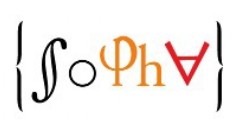In the modern social landscape people in the public eye must adhere to certain rules of linguistic conduct. Yet some may want to say things that aren't acceptable and find many ways to do it without paying the price. One of which is using a figleaf, which as their artistic namesake, are used to cover some part of an utterance while not withdrawing it. For example, saying “I have many Black friends” followed by a racist utterance is often used to block in the listener the inference that the speaker is racist.
Jennifer Saul created the most comprehensive and widely accepted theory of linguistic figleaves; however, it's entirely focused on the problem of racist figleaves, mainly their socio-political aspect. Though a valid concern, especially due to the phenomenon of shifting norms caused by the usage of figleaves, it narrows the view on the issue and limits the research on this topic. I argue that figleaves should be regarded as a general phenomenon of speech not being tied to racism only. Which is crucial because the racism-central socio-political approach demands exclusion of the aspect of speaker's intentionality, thus narrowing our understanding of the phenomenon itself and excluding promising areas of research.
|
Between Language and Politics: a New Approach to the Study of Figleaves
1 : Jagiellonian University
|

 PDF version
PDF version
